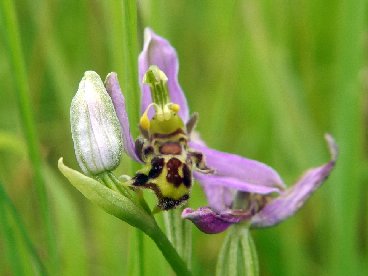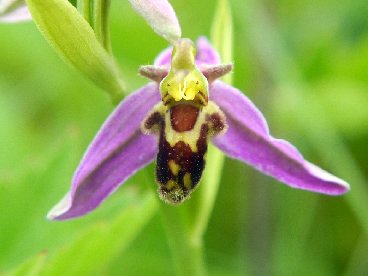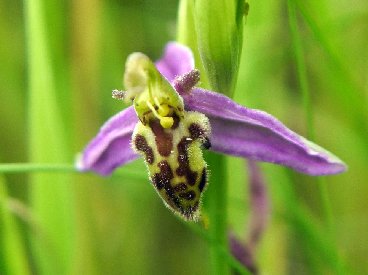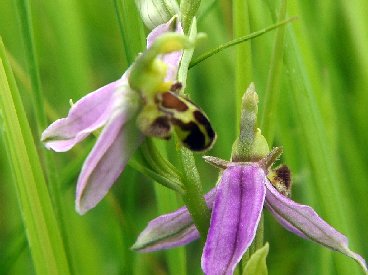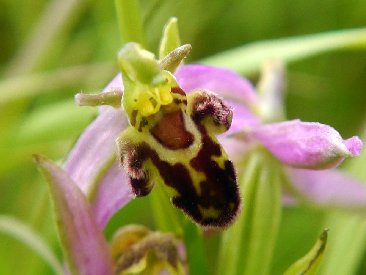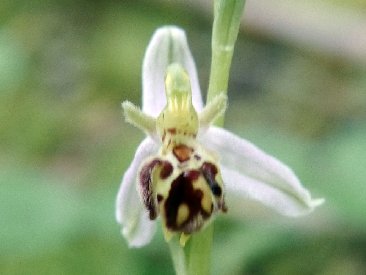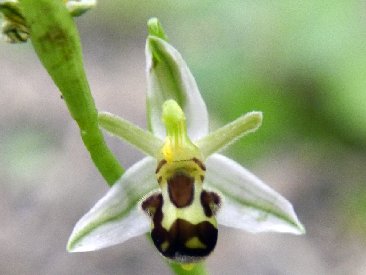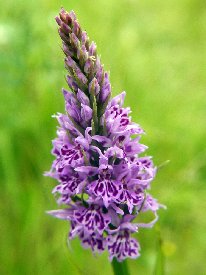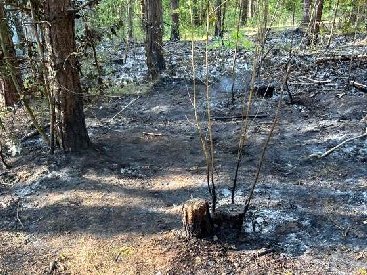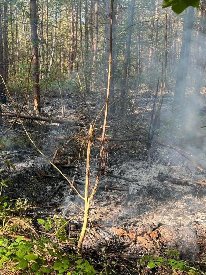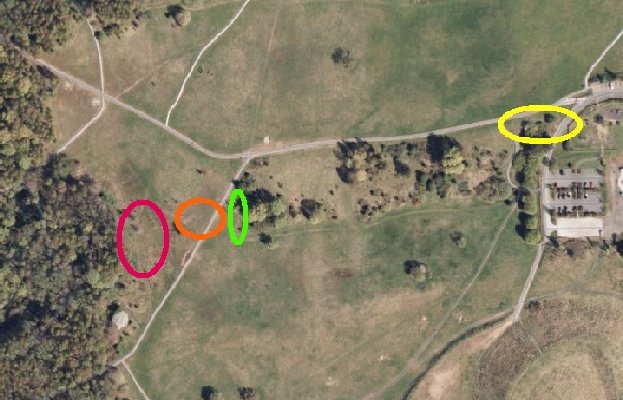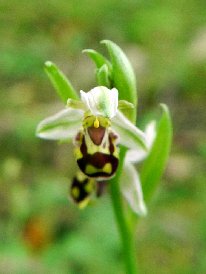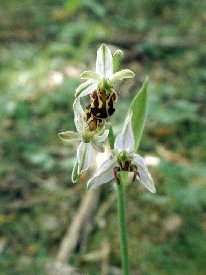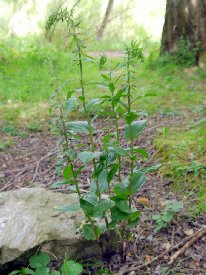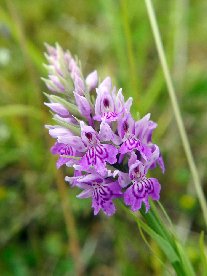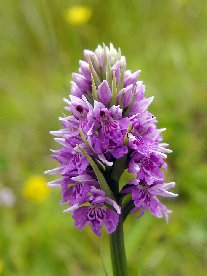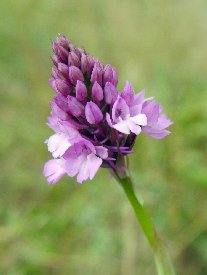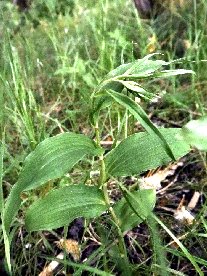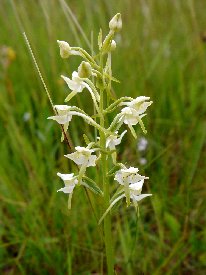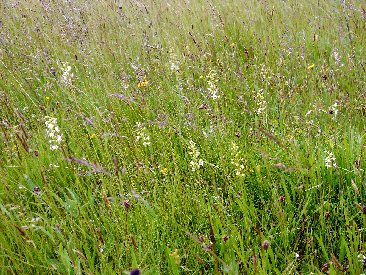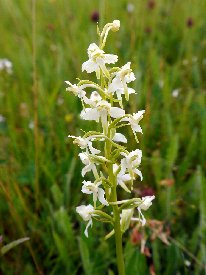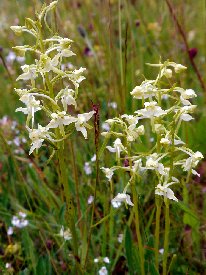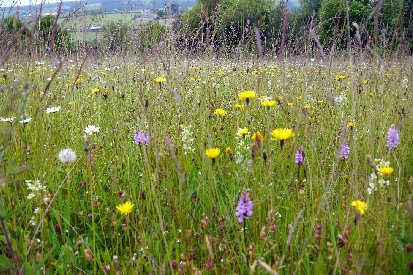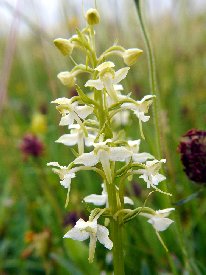|
|
||||||||||||||
|
|
||||||||||||||
 |
|
Maes y Pant 18th June 2022 (SJ 35397 55187) The Bee Orchids should be out now, and I want to search in a new area, which is open and planned as some sort of orchard. Yes, there are Bee Orchids, but what catches my eye is what could be described as a cluster of abnormal forms, no two alike. The affected part in each case is the lip, and in each case there is no speculum. They do not fit any of the recognised named varieties the species, though the third one does have some features of Var. belgarum, with much reduced shoulder bumps. As they were all in the same small area, my immediate thoughts are it must be something in the soil. It cannot be climatic, because there are perfectly normal specimens mixed in with them. Furthermore, when we go to check on those growing in the wooded area we come across these shown below. The lack of pink in the sepals was noticed last year here, and I have seen this elsewhere, so I can put that down purely to low light levels. The second is not as extreme as the rest but still has those reduced shoulders and no blue speculum. I decide to do some reading. In Ophrys The Bee Orchids of Europe Pefersen and Fauhooldt maintain that plants like these and the recognised varities of the British Bee Orchids do not deserve varietal names, describing them as monstrous forms. These forms can arise two ways, Disturbance of the cell-producing meristem in the developing flower can lead to such forms, often with just one flower per spike affected. In subsequent years they will revert to normal. Otherwise these are acquired mutations which persist and due to the self-pollinating nature of the Bee Orchid are heritable and persistent. Hence that cluster of Wasp Orchids seen at Clattinger Farm. Presumably some mutations are more likely than others, resulting in the wide distribution of the recognised varieties. This site needs investigating in future years to see if these abnormalities do persist or whether it is a 2022 phenomenon. While I am there a Common Spotted Orchid caught my eye, for obvious reasons. I am going to call this a demi-semi rhodochila. A search revealed no others similar. Could this hyperchromatic appearance be due to genes that are co-dominant? Inheriting the gene from one parent leads to this, while from both parents gives a full blown Var rhodochila. Unfortunately I have only seen one of those and did not search the field for any examples like this one. Something for the future too. Two days after this visit an untended campfire caused a small conflagration in the woods. It was extinguished, but one tree had to be felled. The affected area was said to be the size of three tennis courts. I thought units that can be understood by the public were limited to London buses (length), football pitches (area), olympic swimming pools (volume), and elephants (weight). Anyway, a quick check reveals that the main orchid sites I visit here were unaffected, though I have no idea how much was trampled by the emergency services attending the fire.
Alyn Waters Country Park 21st June 2022 (SJ 31995 54686) First trip to what is home turf this year, and I looking to see if the Bee Orchids on the Llay side have the same abnormalities as Maes y Pant. They do not, but what I do notice is that the colony is definitely on the move. Back in 2012 the only ones see were at the yellow oval on the diagram below. A couple of years later they appeared in the green area, and then by 2016 also at orange. Yellow by now had died out, followed by green by 2018. 2020 was a leanish year, but in 2021 they were seen in the red area, and this year they are concentrated more on the northern part of red. This progression may be due to each site being at a very slightly lower elevation. Could it be that the country park is getting dryer and the new sites retain sufficient soil moisture for the orchids.
Back over on the Gwersyllt side Bee Orchids have also come and gone. Starting last year they appeared under the willows behind the visitor centre, and this year they are even better. A few years ago some fine specimens grew adjacent to this area, but soon disappeared. These Bee orchids are pale, and like the other woodland specimens have no pink on the sepals, just a green central band. One has a lip that looks like it comes from two different flowers stitched together. Make of this what you like. Meanwhile I am happy to wait for this 5 spike Broad-leaved Helleborine to flower. Otherwise everything is just as expected, apart from noticing one Pyramidal Orchid on the Llay side for the first time. Brymbo Pool 22nd June 2022 (SJ 28740 53724) A something to do today visit, not expecting too much. The Bee Orchids are out; only 8 of them. There are some nice Common Spotted Orchids with are sort of two-tone floral effect, and there is a couple of Pyramidal Orchids, not seen here before. Over in the wooded bit an example of a Broad-leaved Helleborine with leaves opposite on the stem, disproving that identification rule. P__________ Shropshire 24th June 2022 Sorry folks, but I am being a bit cagey about the exact location here, because I do not believe it is the public domain. However, it must be a premier site for Greater Butterfly Orchids in the UK. Three adjacent flower meadows absolutely filled with what I estimate to be in excess of 10,000 plants. Remarkably, they do not seem to grow in patches as I have seen them in others sites, but look to be evely distributed across the entire fields. You can walk the margins without crushing any underfoot, and get a true idea of just how many grow here. They outnumber Common Spotted Orchids by about 25 to 1.
|
|
|
||||||||||||||
